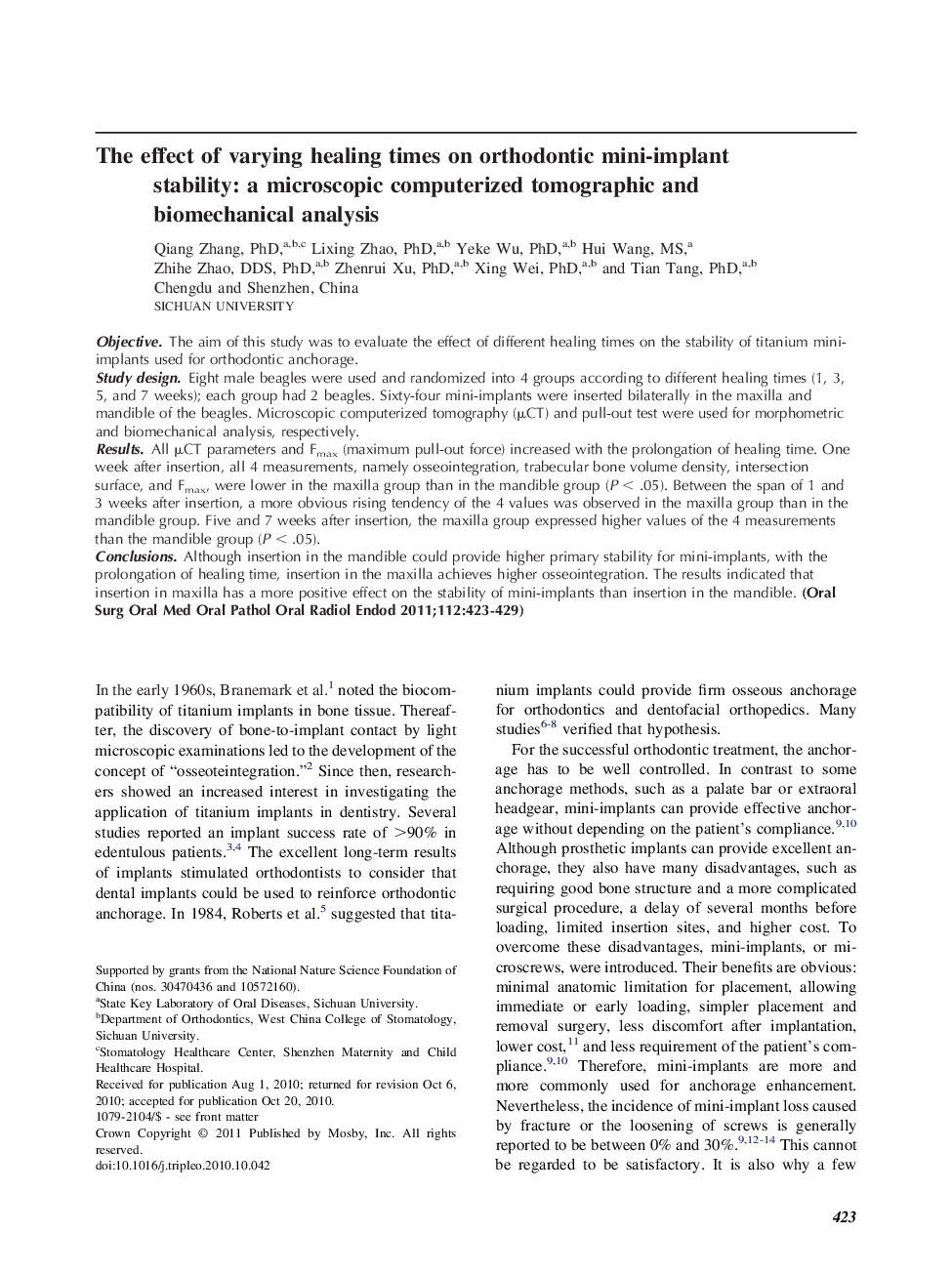| Article ID | Journal | Published Year | Pages | File Type |
|---|---|---|---|---|
| 6059654 | Oral Surgery, Oral Medicine, Oral Pathology, Oral Radiology, and Endodontology | 2011 | 7 Pages |
ObjectiveThe aim of this study was to evaluate the effect of different healing times on the stability of titanium mini-implants used for orthodontic anchorage.Study designEight male beagles were used and randomized into 4 groups according to different healing times (1, 3, 5, and 7 weeks); each group had 2 beagles. Sixty-four mini-implants were inserted bilaterally in the maxilla and mandible of the beagles. Microscopic computerized tomography (μCT) and pull-out test were used for morphometric and biomechanical analysis, respectively.ResultsAll μCT parameters and Fmax (maximum pull-out force) increased with the prolongation of healing time. One week after insertion, all 4 measurements, namely osseointegration, trabecular bone volume density, intersection surface, and Fmax, were lower in the maxilla group than in the mandible group (P < .05). Between the span of 1 and 3 weeks after insertion, a more obvious rising tendency of the 4 values was observed in the maxilla group than in the mandible group. Five and 7 weeks after insertion, the maxilla group expressed higher values of the 4 measurements than the mandible group (P < .05).ConclusionsAlthough insertion in the mandible could provide higher primary stability for mini-implants, with the prolongation of healing time, insertion in the maxilla achieves higher osseointegration. The results indicated that insertion in maxilla has a more positive effect on the stability of mini-implants than insertion in the mandible.
